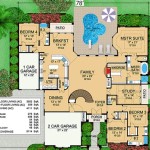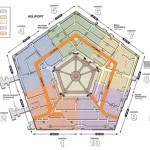Essential Aspects of Electrical Floor Plan Design
Electrical floor plan design is a crucial aspect of any construction or renovation project. A well-designed plan ensures safety, functionality, and efficiency for the electrical system of your space. Here are some essential aspects to consider when creating an electrical floor plan:
1. Safety First
Electrical safety should be the top priority. Adhere to building codes and industry standards to minimize electrical hazards. Include proper grounding, fuse protection, and circuit breakers to prevent overloads and short circuits.
2. Functionality and Convenience
An electrical plan should align with the intended use of the space. Consider where appliances, lighting fixtures, and other electrical devices will be located to ensure convenient access and functionality.
3. Efficient Lighting
Lighting is an essential part of electrical floor planning. Plan for adequate lighting in all areas, considering both natural and artificial sources. Consider energy-efficient lighting options to reduce energy consumption.
4. Electrical Load Calculations
Determine the electrical load of the space to ensure adequate wiring and circuit capacity. Consider the wattage of appliances, lighting, and other electrical devices to determine the total load and ensure a safe and efficient electrical system.
5. Panel Placement and Circuit Distribution
The electrical panel is the central point of distribution for power. Choose an appropriate location that provides easy access for maintenance and upgrades. Plan for circuit distribution to ensure that each circuit has a manageable load.
6. Outlet and Switch Placement
Proper outlet and switch placement is essential for convenience and safety. Plan for enough outlets to accommodate all appliances and devices, and place switches where they are easily accessible.
7. Wiring and Conduit Selection
Choose appropriate wiring and conduit types based on the electrical load and requirements of the space. Consider fire resistance, voltage ratings, and insulation to ensure safety and compliance.
8. Future Expansion
Consider future electrical needs and expansion possibilities when designing your floor plan. Include extra circuits, conduits, and panels to accommodate potential growth or changes in electrical usage.
9. Grounding and Bonding
Proper grounding and bonding are essential for safety and equipment protection. Ensure that all electrical components are properly grounded and bonded to prevent electrical shock and damage.
10. Professional Design and Inspection
Electrical floor plan design should be undertaken by qualified and licensed electricians. Follow all applicable codes and standards, and obtain necessary permits and inspections to ensure compliance and safety.
By following these essential aspects, you can create an effective and efficient electrical floor plan that meets the safety, functional, and aesthetic requirements of your space.
Create An Electrical Plan Roomsketcher Help Center

Electrical Drawing Blueprints Plan Layout Floor

It S Electrical

Free House Wiring Diagram Edrawmax

Electrical Plan 101 Know Basics Of Edrawmax

Electrical House Plan Layout Design

Design Or Draw Floor Plans Electrical Plumbing Drawings By Tmraju1 Fiverr

Electrical Plan Examples And Templates To Kick Start Your Project

Electrical Plan 101 Know Basics Of Edrawmax

Illuminate Your Space With An Efficient Electrical Lighting Plan








